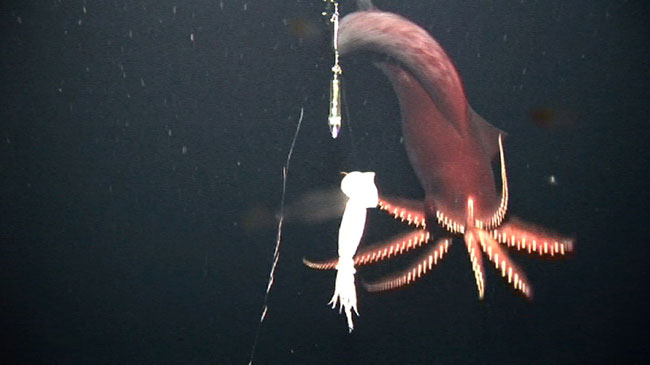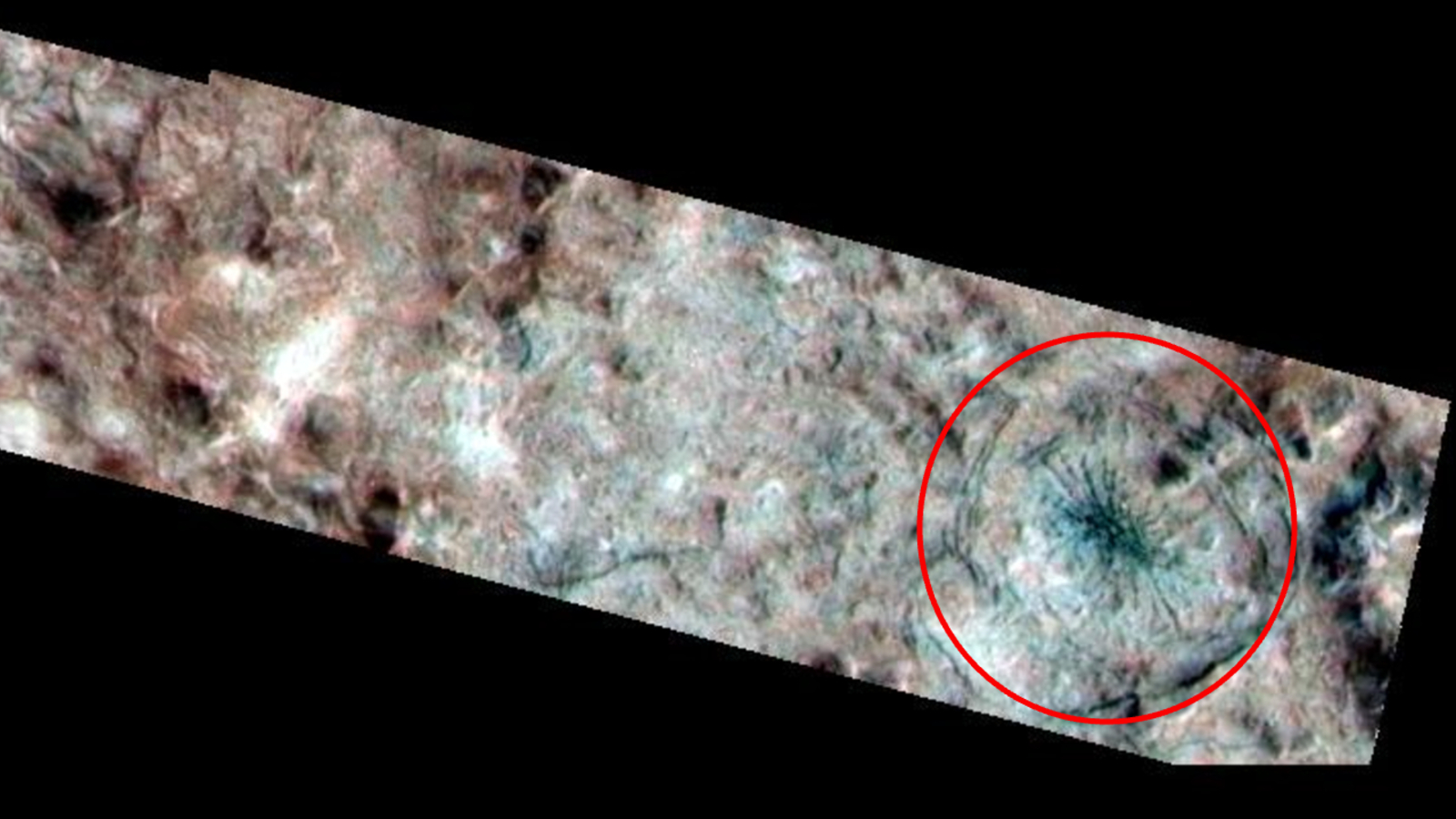First Videos of Deep-Sea Squid Reveal Aggressive Predator

The first live videos of the deep-sea eight-armed squid in its natural environment reveal it to be a fast, aggressive predator that flashes light shows potentially to blind prey or woo mates.
Zoologist Tsunemi Kubodera at Japan's National Science Museum in Tokyo and his colleagues, the same researchers who caught the first live giant squid (Architeuthis) footage two years ago, recorded the deep-sea eight-armed squid Taningia danae using a newly developed underwater high-definition video camera system.
Video of the squid ...
- Swimming forwards and backwards around bait.
- Attacking a rig line that researchers dangled bait on.
- Flashing light at prey, potentially to blind it.
- Attacking the halogen light researchers used to observe it.
The deep-sea eight-armed squid is the largest known bioluminescent or light-emitting creature in the world. The largest known specimen grows up to 7.5-feet long and 130 lbs., with eyes the size of large grapefruits. Hundreds of their beaks have been found in sperm whale stomachs, suggesting these are very abundant in tropical and subtropical oceans.
The researchers tracked the squid off the Ogasawara Islands, roughly 600 miles south of Tokyo. They suspended their cameras from about 750 to 3,000 feet deep, and on a pole attached to the cameras, Kubodera and his colleagues dangled tiny flashlights and bait, either a smaller squid or a mackerel.
The squid naturally possesses many tiny cavities of ammonia solution within its flesh to help maintain buoyancy, making the bodies of captured specimens flabby and soft to the touch. This led scientists to suspect it moved sluggishly.
However, the new videos reveal the squid is far from sluggish. T. danae can flap its large, muscular, triangular fins to swim both forward and backward and is highly maneuverable, rapidly changing direction by bending its flexible body.
Get the world’s most fascinating discoveries delivered straight to your inbox.
The squid not only attacked bait, but the flashlights as well.
"Blue light seemed provocative," the researchers noted in their online report in the Feb. 13 issue of the journal Proceedings of the Royal Society B.
The researchers also saw the squids emit short bright light flashes from large glowing organs at the tips of their tentacles before their final assaults. Kubodera and his colleagues speculate these flashes might blind prey or help the squids measure distance to their targets in the dark depths of the sea.
As the squids wandered around the red flashlights attached to the bait rig, the scientists also saw the animals pulse long and short glows. These might be attempts at communication or even "potential courtship behaviors," Kubodera and his colleagues wrote.
- Top 10 Amazing Animal Abilities
- Deadly New Sea Creature Lures Fish with Red Lights
- Mystery Ocean Glow Confirmed in Satellite Photos
- Images: Venomous Fish



